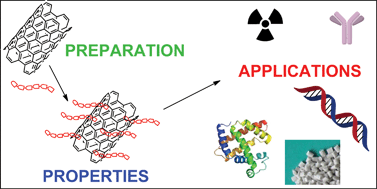PEGylated carbon nanotubes: preparation, properties and applications
Abstract
The application of carbon nanotubes (CNTs) in many different fields, e.g. in materials chemistry or in bio-nanomedicine, does require their surface derivatization to overcome the low solubility in organic or aqueous media. CNTs PEGylation, viz. the attachment of polyethylene glycol chains to the nanotubes, is rapidly emerging as a technique to increase the actual applications of these (nano)materials. This review focuses on the different approaches available to PEGylate CNTs, either covalently or non-covalently, as well as on the most common techniques adopted to characterize the resulting materials. Finally, the applications of PEGylated CNTs to different fields (mainly drug delivery) are briefly reported.


 Please wait while we load your content...
Please wait while we load your content...